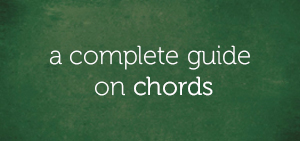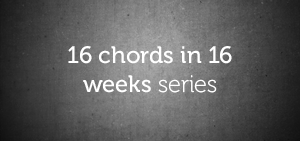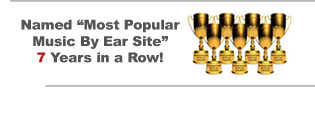This lesson will provide you with some insights on the capabilities of the keyboard.
Dear keyboardist, one of the best things that can happen to you is for you to have an understanding of what your instrument can do.
The keyboard is a multi-dimensional instrument that can serve many purposes: (which is not limited to) melodic, harmonic, and rhythmic purposes.
Sadly, so many keyboardists don’t have an understanding of the capabilities of their instrument and that’s why I decided to write this lesson to exposed a few of the capabilities of the keyboard.
Although there are more things the keyboard can do, I’ll be showing you the top four capabilities of the keyboard.
The Melodic Capabilities Of The Keyboard
The range of an instrument or voice is defined as the interval between the lowest possible and highest possible note that can be played or sung.
The keyboard has an 88-key range (52 white keys and 36 black keys) consisting of all the tones in the chromatic scale and encompassing 7 octaves from A0 to C8.
“Check Out The Range Of Other Instruments…”
The Trumpet (F#3 to D6)
Guitar (E3 to E6)
Violin (G3 to A7)
Bass Guitar (E1 to Eb5)
Can you compare any of these instruments with the keyboard in range? No!
Attention: Although keyboards can be physically limited in range, they have octave shift buttons that can electronically adjust their range. So, you can play lower and higher octaves in a 4 octave keyboard using the shift button.
“The Keyboard Can Play Any Melody”
The keyboard can play any melody or melodic line; be it low or high, grave or acute and this is because of its range.
There are instruments that can only play low-pitched melodies, there are other instruments that can play high-pitched melody. Most of these instruments come with name distinctions like contrabass, bass, alto, tenor, soprano, etc.
A saxophonist may not be able to play low-pitched melodies without a bass saxophone and this is because the range of pitches required are beyond the soprano, alto, and tenor saxophone instruments.
But the range of the keyboard spans from A0 to C8 and can play any melody or melodic line from bass lines to runs, licks, etc.
The Harmonic Capabilities Of The Keyboard
An instrument is said to be polyphonic when several layers of tones can be played simultaneously. The keyboard is polyphonic because
Depending on the keyboard, you can have a polyphonic capability of 16 to 256 notes:
16 notes polyphony
32 notes polyphony
64 notes polyphony
128 notes polyphony
256 notes polyphony
In a keyboard with 128 notes polyphony, up to 128 notes can be played at the same time and that’s way more than the 88 keys on the entire keyboard layout.
What this means is that it’s possible to play all the 88 keys on the keyboard at the same time on a keyboard with 128 notes polyphony. Even if you do, that’s just 88 out of the 128 notes that can be played simultaneously.
Due to the polyphony of the keyboard, it’s possible to play any chord type or quality; the number of notes not withstanding.
The Rhythmic Capabilities Of The Keyboard
The movement of the fingers and hands can create interesting rhythmic patterns on the piano that can be used in solo and band situations
Bass Lines
The keyboard can be used to create rhythmic bass lines ranging from the walking bass used in Jazz and Gospel music; to the the alberti bass used in classical music; to the sophisticated stride piano style where the left hand alternates between notes and chords.
Rhythmic Accompaniment
There are lots of rhythmic accompaniments that can be executed on the keyboard.
The montunos that are used in genres like Salsa; the “ragged” rhythm of Ragtime; the syncopated and irregular comping patterns of bebop and post-bop music; and the syncopated vamp of reggae music can be played on the keyboard.
Keyboard instruments have the capabilities to execute these rhythmic feats and so many virtuoso keyboardists have explored the rhythmic capabilities of the keyboard.
The Synthesizing Capabilities Of The Keyboard
The keyboard is capable of generating the intonation (aka – “timbre”) of several instruments.
You’ll also find hundreds to thousands of sounds, tones, voices, and effects that are ideal for performance and recording situations.
These voices are arranged into categories which include piano and keyboard, e-piano, organs, guitar, bass, strings, flute, brass, pads, synths, drums, percussion, effects. etc.
Just one keyboard is capable of producing the sound of a wide variety of instruments and with technological advancement, it’s possible to play as a “one-man-band” using a keyboard.
Final Words
There’s obviously more to the keyboard than meets the eye and it’s important for every keyboardist to know that much is given to him/her (melodic, harmonic, rhythmic, and synthesizing capabilities) and much more is expected.
Attention: We are social. Follow us on Facebook and don’t forget to subscribe to our YouTube channel.
To take you a step further, we’ll be talking about the roles of a keyboardist in a band situation in a subsequent lesson.
See you then!
Chuku Onyemachi
Latest posts by Chuku Onyemachi (see all)
- The Formation Of Diminished Seventh Chords Used To Be Challenging Until I Did This
- How To Form Seventh Chords In Two Shakes Of A Dog’s Tail Using Third Intervals And The Circle Of Fifths Chart
- I Played The 13sus4 Chord And This Happened…
- How To Build Seventh Chords Like An Architect Using “Foundation And Structure” Concept
- This 4-Week Plan Will Help You Master All The Major Scales







Comments on this entry are closed.